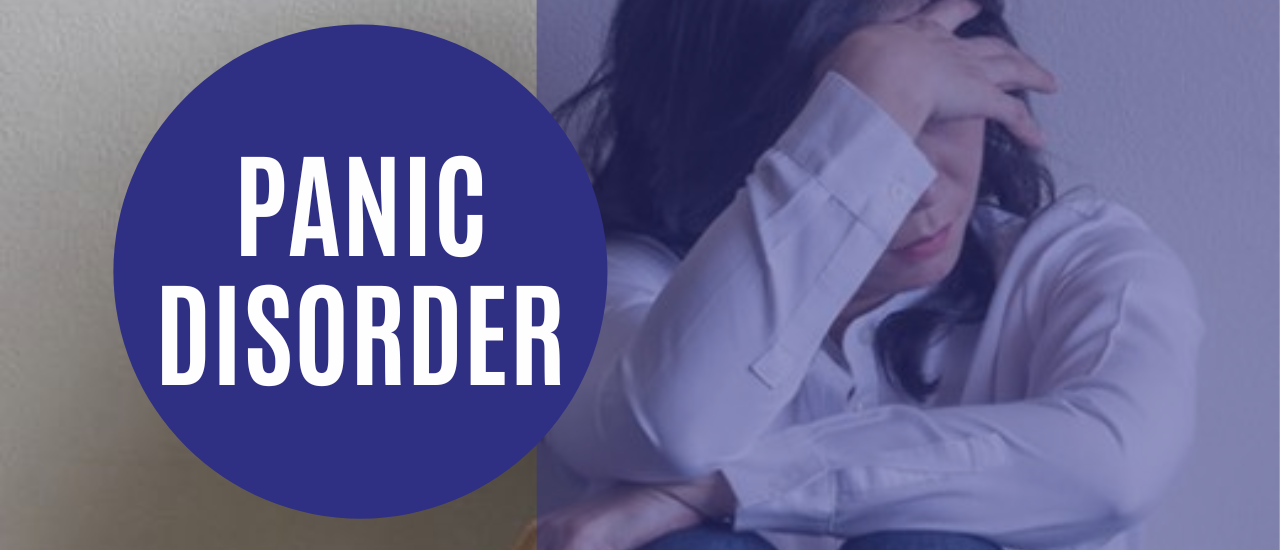

wordpress-seo domain was triggered too early. This is usually an indicator for some code in the plugin or theme running too early. Translations should be loaded at the init action or later. Please see Debugging in WordPress for more information. (This message was added in version 6.7.0.) in /home/sehatnagar.com/public_html/wp-includes/functions.php on line 6114
Many people experience some mild sensations when they feel anxious about something, but a panic disorder is much more intense than usual. A panic attack is usually described as a sudden escalating surge of extreme fear. If you have repeated, and unexpected panic attacks, you may have panic disorder. Panic disorder causes bouts of overwhelming fear when there is no specific cause for the fear. In between panic attacks, you may worry greatly about when and where the next one may happen. It can even keep you from leaving your home.
Someone with panic disorder has a persistent fear of having another attack or worries about the consequences of the attack. Many people change their behavior to try to prevent panic attacks. Some people are affected so much that they try to avoid any place where it might be difficult to get help or to escape from. The cause of panic disorder is unknown. Panic disorder often runs in families. Risk factors include smoking, psychological stress, and a history of child abuse. Diagnosis involves ruling out other potential causes of anxiety including other mental disorders, medical conditions such as heart disease or hyperthyroidism, and drug use. Although panic attacks themselves aren’t life-threatening, they can be frightening and significantly affect your quality of life. But treatment can be very effective.
• Skipping, racing or pounding heart
• Dizziness, lightheadedness, feeling faint
• Thoughts of losing control or going crazy
• Feeling things around you are strange, unreal, detached, unfamiliar, or feeling detached from body
• Trembling or shaking
• Choking sensations
• Shortness of breath or difficulty breathing
•Chest pain, pressure or discomfort
• Nausea, stomach problems or sudden diarrhea
• Tingling or numbness in parts of your body
Sweating
• Hot flushes or chills
• Fear of dying
Panic attacks can be classified into two distinct types: expected and unexpected.
Expected panic attacks have clear, known triggers. They can be caused by phobias or specific emotional events or circumstances in our lives.
Unexpected attacks have no known cause. These attacks occur as if out of nowhere and cannot be traced back to a specific event or experience. They can occur in otherwise benign situations of relative calm. Panic attacks can lead to the development of agoraphobia. Agoraphobia is the fear of being in a situation or place where one cannot escape and help is not available. As a result, those with agoraphobia develop significant avoidance behaviors, preferring to stay in an environment they can control.
In addition to medication, patients often begin psychotherapy to understand and manage the panic disorder. Patients have found help with cognitive behavioral therapy, panic-focused psychodynamic psychotherapy, group therapy, and more.
Professionals have recently advocated for overall wellness practices to combat anxiety and panic disorder. This can include getting regular sleep and exercise, a healthy nutrition regimen, reducing social media consumption, and mindfulness practices like meditation.
Panic disorder can significantly impair your life. Patients with this condition often modify their behavior or social interaction in hopes of rooting out attacks. It can feel like your entire life is reduced to managing panic attacks. Because there is often no known cause of panic attacks, identifying the proper treatment regimen can take some time.
Managing autonomic symptoms is often the first step in treating panic disorder. The racing heartbeat and heart palpitations of physical symptoms can be exhausting or dangerous for the body. As a result, many people begin by managing physical symptoms with medication. Professionals often prescribe a combination of benzodiazepines and antidepressants to alleviate these symptoms.
Body Dysmorphic Disorder DSM-5; Causes & Signs
Dissociative Disorder: Symptoms, Causes & DD Facts
Narcissistic Personality Disorder Nhs: Types & Risk Factors